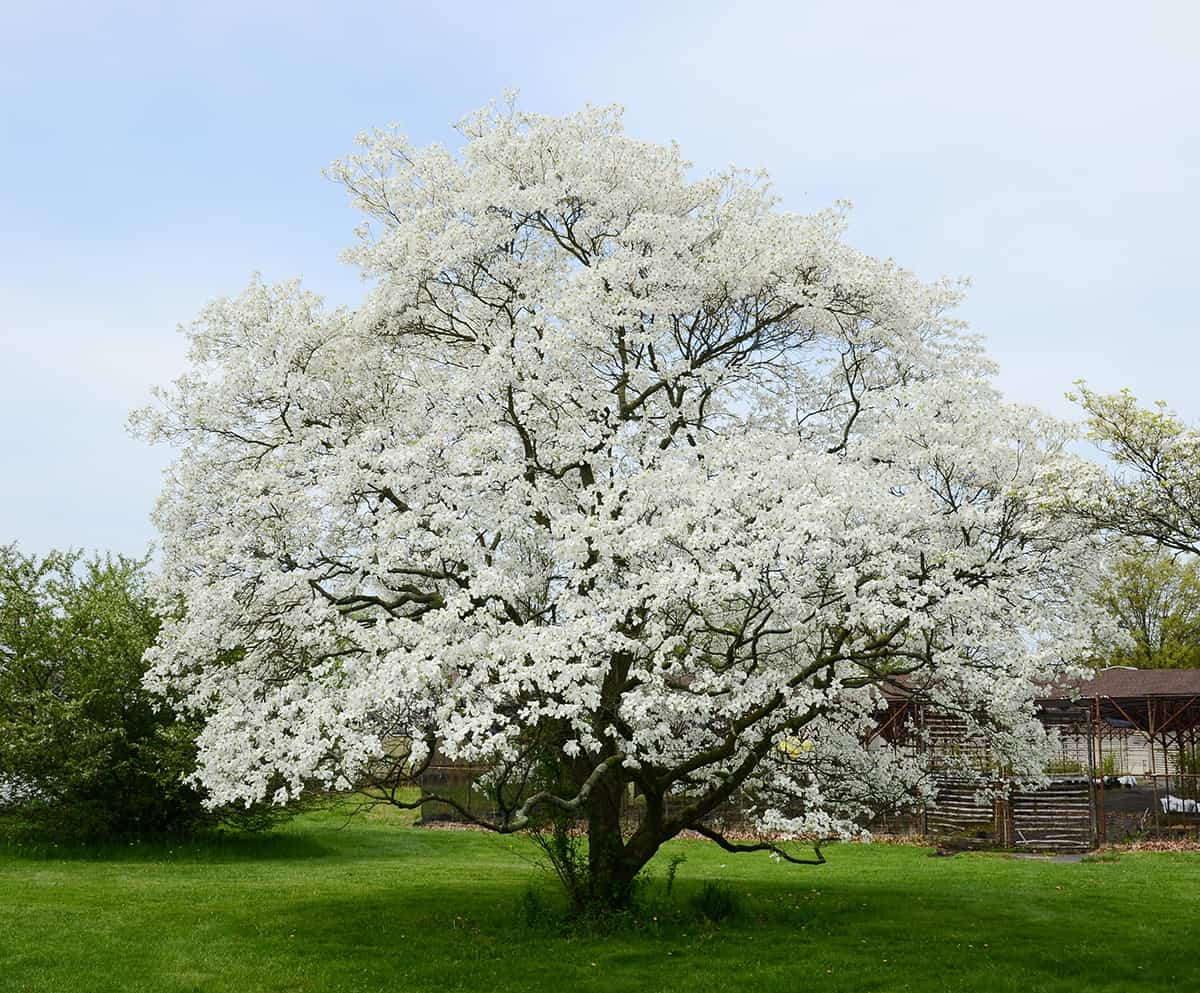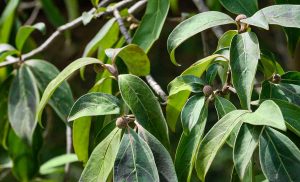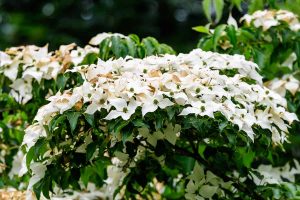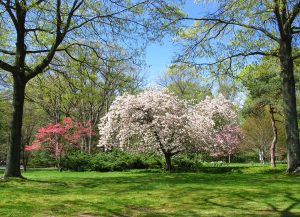Dogwood trees range in size depending on the type of dogwood tree, as well as the conditions they are growing in. These trees can reach a maximum height of anywhere between 6 feet and 40 feet, and their spread is typically equal or slightly smaller to their height size.
The smallest types of dogwood trees are Roughleaf dogwoods, which will grow to between 6 and 15 feet in height, while the tallest dogwood trees are the Pacific dogwood and the Evergreen dogwood.
These max out at around 40 feet in height, if they are grown in ideal conditions. Here we look at the common mature sizes for a range of dogwood trees, and what affects their eventual size.
Table of Contents
Small Dogwood Trees
Roughleaf Dogwood
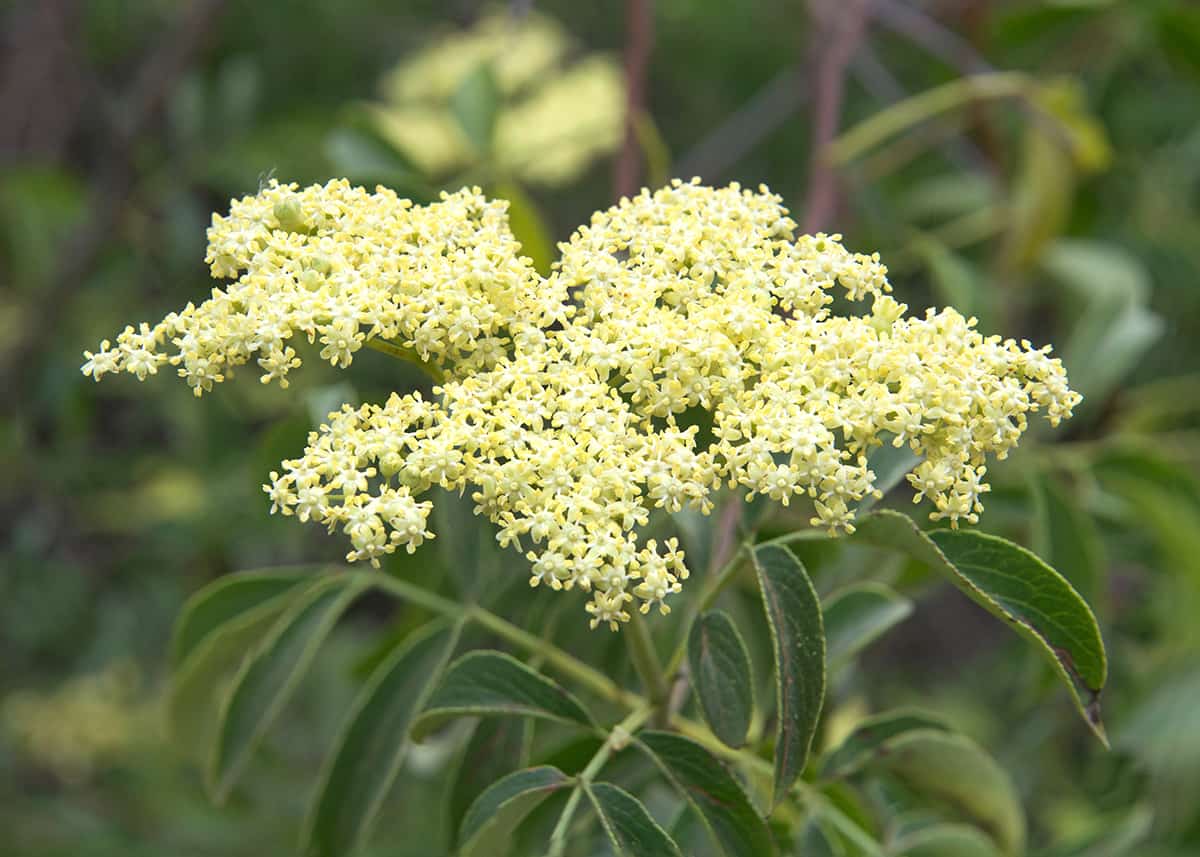
- Botanical name: Cornus drummondii
- Common names: Roughleaf Dogwood, Drummond’s Dogwood
- Plant family: Cornaceae
- USDA hardiness zone: 5 – 8
- Mature height: 6 to 15 feet
- Mature spread: 6 to 15 feet
This deciduous plant grows as a medium to large shrub or small tree, and it is among the smallest of all types of dogwood tree. If it is grown in full sun it will reach maximum heights of around 6 to 8 feet, whereas if grown in partial shade it will grow considerably taller.
The Roughleaf dogwood will not exceed 15 feet in size, both in terms of height and spread, making it an ideal choice of dogwood for compact spaces. The spread of this tree will always be around equal to its height, as it grows outwards at the same rate that it grows upwards. The Roughleaf dogwood is named after its foliage, which has a rough texture on the surface, with a smooth and velvety texture on the underside.
Swamp Dogwood
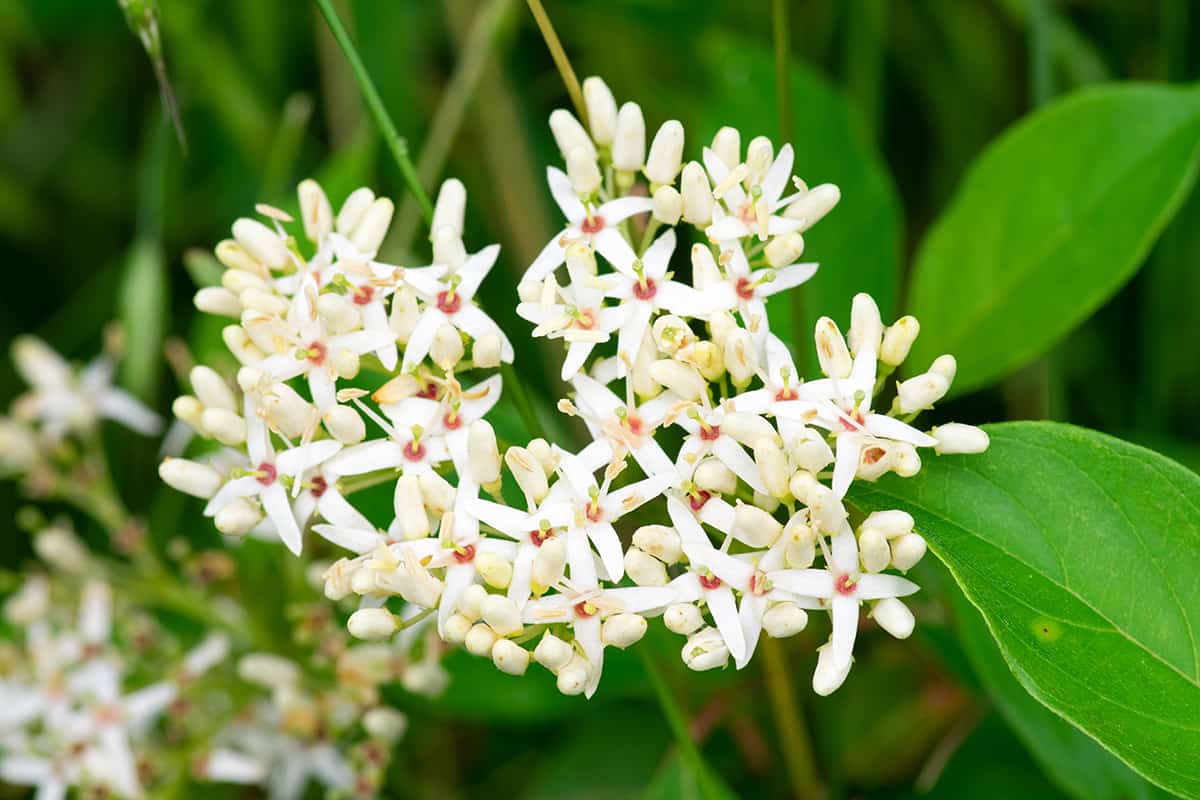
- Botanical name: Cornus foemina
- Common names: Swamp Dogwood, Stiff Dogwood
- Plant family: Cornaceae
- USDA hardiness zone: 6 – 10
- Mature height: 10 to 25 feet
- Mature spread: 10 to 15 feet
This is a dogwood plant which can be grown as either a shrub or a tree, occurring naturally in swamplands and wet areas in the eastern United States. It is one of the smaller types of dogwood, spanning between 10 and 25 feet in height at maturity. Unlike other types of dogwood, the spread on the Swamp dogwood can be considerably less than its height.
The maximum width of this tree will be 15 feet, which is almost half the size of its maximum height. The Swamp dogwood prefers soils which are moist to wet, and in these conditions the tree will be more likely to reach the higher end of its size bracket. It will thrive in partial shade, however it can also tolerate full sun and almost full shade.
Cornelian Cherry
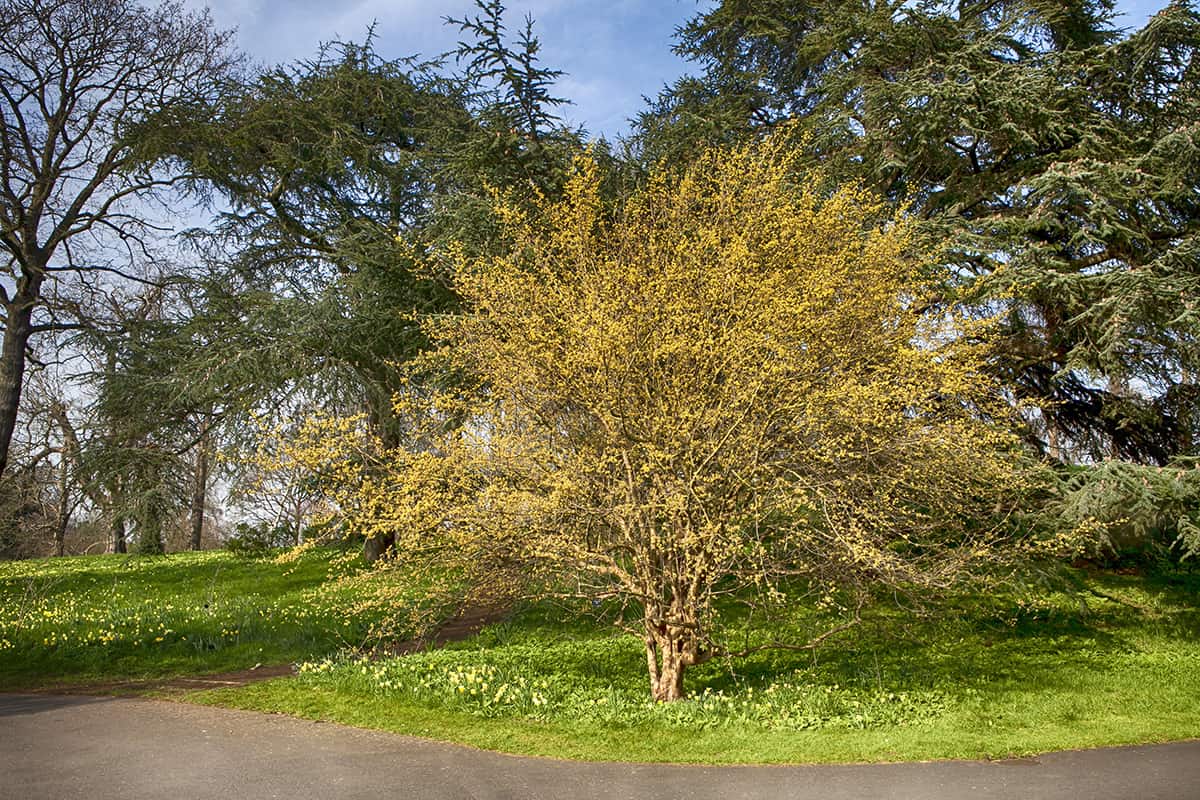
- Botanical name: Cornus mas
- Common names: Cornelian Cherry, Cornel Tree
- Plant family: Cornaceae
- USDA hardiness zone: 5 – 8
- Mature height: 15 to 25 feet
- Mature spread: 12 to 20 feet
This dogwood tree is native to Europe and Asia, where it will reach maximum height of 25 feet. When grown in conditions that mimic the plant’s natural environment, the tree can be expected to mature at 20 to 25 feet in height and 15 to 20 feet in spread.
In less-than-ideal conditions, it is normal for the Cornelian Cherry dogwood not to exceed 15 feet in height and 12 feet in spread. This is an especially attractive tree that retains interest through all four seasons. It is known for the cherry-like fruits it produces and its resistance to pests and disease.
Large Dogwood Trees
Kousa Dogwood
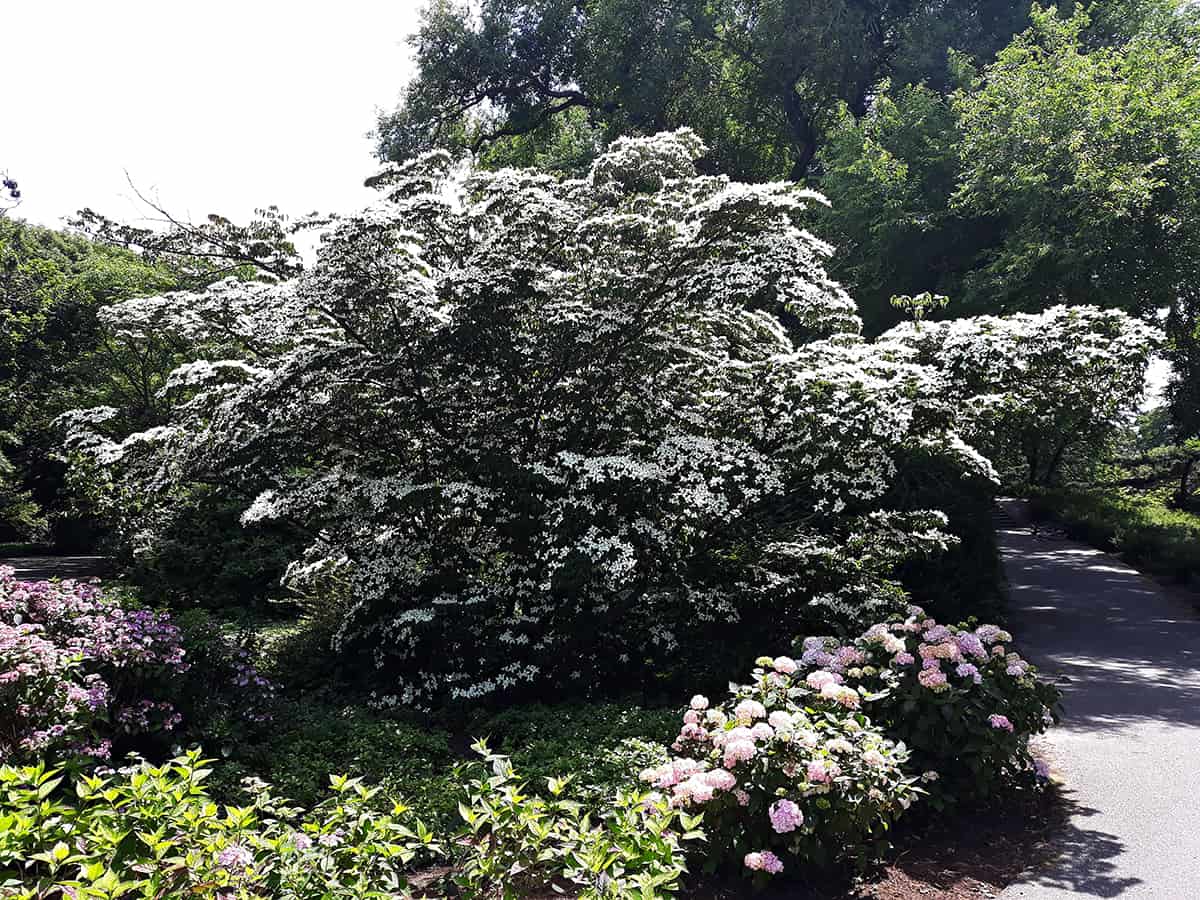
- Botanical name: Cornus kousa
- Common names: Kousa Dogwood, Japanese Dogwood
- Plant family: Cornaceae
- USDA hardiness zone: 5 – 8
- Mature height: 7 to 30 feet
- Mature spread: 3 to 30 feet
The Kousa dogwood is native to Asia, and it typically reaches mature heights of between 15 and 30 feet. However, there are some exceptions to this. The Kousa dogwood ‘Summer Gold’ is a small variety that will max out at 7 to 8 feet in height, and the Kousa dogwood ‘Miss Satomi’ is another dwarf dogwood variety that will not exceed 15 feet in height.
By comparison, the Kousa dogwood ‘Milky Way’ can be expected to reach at least 20 feet in height and will commonly mature at around 30 feet tall. Kousa dogwood ‘Scarlet Fire’ is another larger variety of Kousa dogwood, which typically reaches around 25 feet in height, with a spread of up to 20 feet.
Evergreen Dogwood
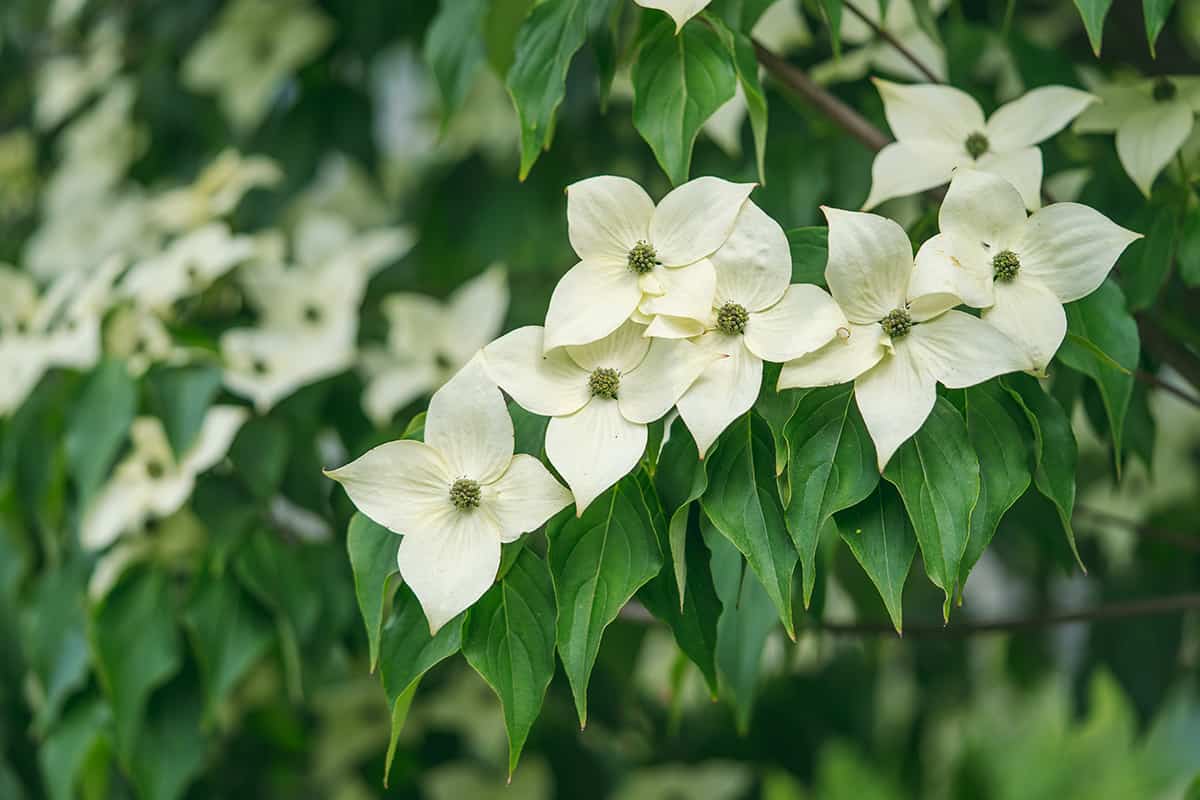
- Botanical name: Cornus capitata
- Common names: Evergreen Dogwood, Himalayan Dogwood, Himalayan Strawberry Tree,
- Plant family: Cornaceae
- USDA hardiness zone: 8 – 9
- Mature height: 20 to 40 feet
- Mature spread: 20 to 40 feet
The Evergreen dogwood is one of the tallest types of dogwood trees, reaching up to 40 feet in both heights and spread in ideal conditions. It is native to China and produces fruits that are both ornamental and edible. Unlike the majority of dogtrees, the Evergreen dogtree is not deciduous, and therefore it retains its foliage all year round.
Pacific Dogwood
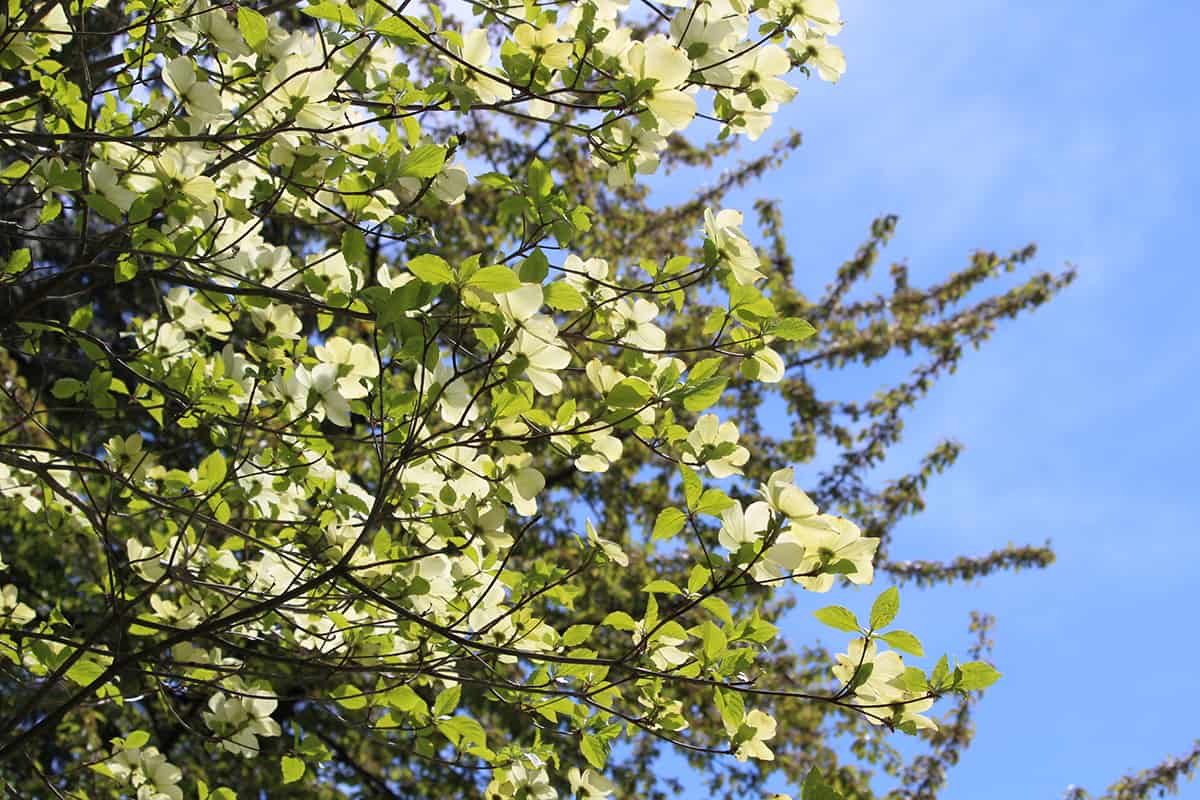
- Botanical name: Cornus nuttallii
- Common names: Mountain Dogwood, Pacific Dogwood, Pacific Flowering Dogwood
- Plant family: Cornaceae
- USDA hardiness zone: 7 – 9
- Mature height: 15 to 40 feet
- Mature spread: 10 to 25 feet
Native to the southwestern region of North America, this is among the largest of all dogwood trees. In ideal conditions, it will grow to a mature height of 40 feet, though the spread is typically much less at a maximum of 25 feet.
This tree grows best in partial shade, and though it can tolerate full sun, this can stunt its growth.
What Affects Dogwood Tree Size?
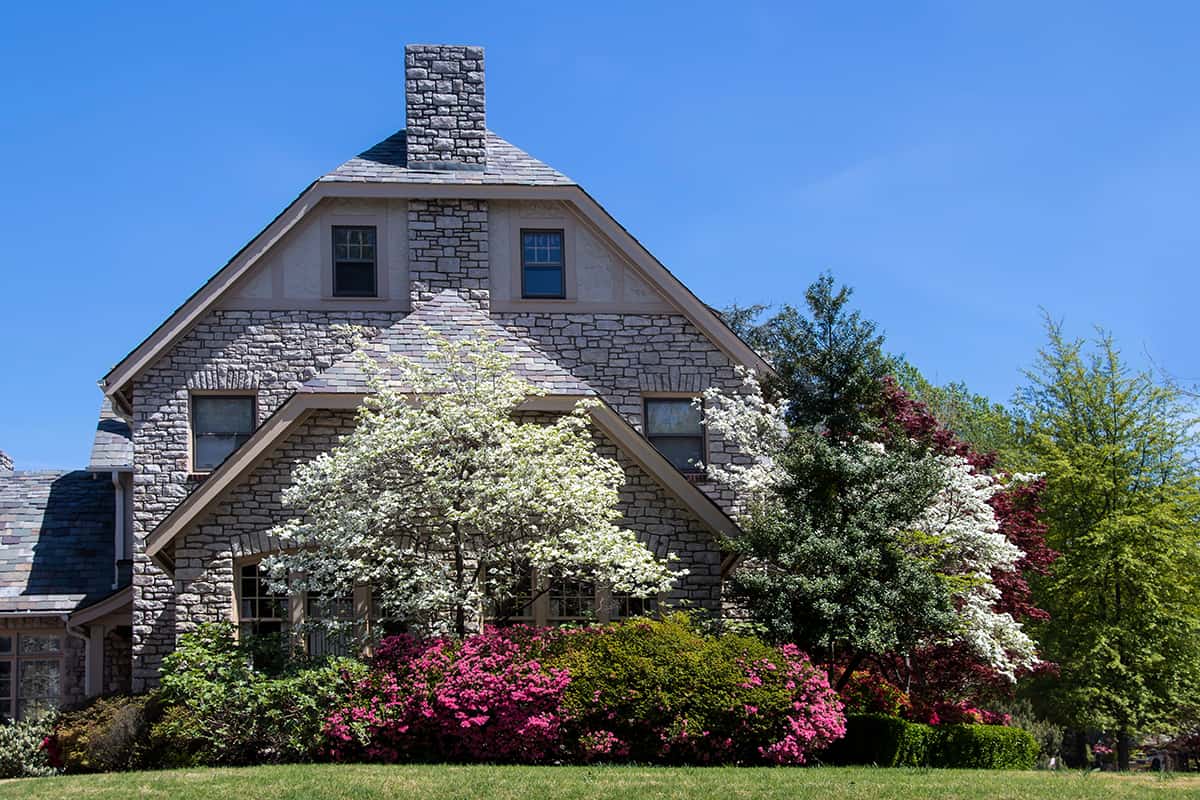
Light
Different types of dogwood trees require different lighting levels, but in general, most prefer partial shade. Though most dogwoods will tolerate full sun or close to full shade, these types of lighting will negatively affect the tree’s ability to reach its maximum potential height.
To encourage your dogwood tree to grow well, ensure it is planted in an ideal lighting position. This could mean providing shelter and shade to prevent the tree from getting too much light and heat on summer afternoons.
Soil
Most dogwood trees will adapt to a variety of soil types, though when in their preferred soil, they are more likely to reach their full potential size.
Know your dogwood tree and its preferences so that you can fulfill its needs. For example, Swamp dogwood prefers moist or wet soil, while Pacific dogwood will grow best in well-draining soils that are kept dry to moist.
Moisture
The level of moisture in the soil will affect a dogwood tree’s ability to reach its maximum potential size. Some dogwood trees prefer moist soil, while others have a preference for wet soil. Some dogwoods have a tolerance to drought. However, they will not thrive in soils that are too dry.
Pay attention to the level of moisture your dogwood tree prefers, and aim to match this in order to help your tree grow to its greatest possible size. If your dogwood tree is grown in conditions that are not ideal, then this can stunt the growth of the tree, resulting in a dogwood that is smaller in height and spread than expected.
